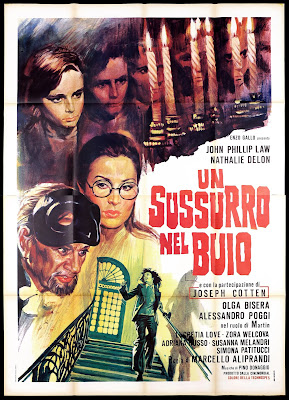House
of the Damned is that generically titled, sort of
misleading, pleasant delight that reminds me of why I still enjoy exploring
near-forgotten Eurocult films from decades past with the word “House” in
their titles. It’s far from the traditional haunted house horror and is more of
a peculiar seaside murder drama that still hits a lot of the right notes for Spanish
horror fans. The translation of the Spanish title is something like The She Wolf and the Dove, which I
think is referring to Sandra and Maria (played by Carmen Sevilla and Muriel
Catalá), the two main female characters who are also featured on the different
regional title posters.
Which one of them is supposed to be the wolf and which
one is the dove?







